Review: 2013 Volkswagen Beetle Convertible (Video)

Redesigning retro is a herculean task. You need to change the vehicle enough to be worth the effort, meanwhile maintaining an iconic retro theme. If you don’t change enough, shoppers won’t see a reason to trade in their old flashback for the new time capsule. Change it too much and you’re left with a caricature. The task is so daunting that few even attempt it. (Just look at the one-hit-wonders: PT Cruiser, HHR, SSR and Thunderbird.) VW on the other hand is different. After all they continued to build and sell the same Beetle with minor tweaks for 65 years straight. If anyone can tweak retro and convince people they need it, it’s VW. Sure enough, 2012 was the best Beetle sales year since 1973. As a chaser to VW’s revived retro-mojo, the Beetle is now offered sans-top and VW tossed us the keys to a brown-on-brown model for a week so we could get our 70s on. Can you dig it?
Exterior
This Beetle, like the old “New Beetle,” sells on nostalgia and cutesy-bubbly good looks. In fact, the first words anyone utters upon seeing a Beetle are: “aww, its cute.” See the problem? How many guys buy “cute” cars? Recognizing the problem, VW set out to “butch things up” with the second generation FWD Beetle. The bubbly-fenders, round headlamps and “smiling” hood lines haven’t left but they have been joined by VW’s corporate “Gillette” grille, sharper corners and more “masculine” tail lamps. (Or so I’m told.) The redesign also adds an incredible 3.5 inches to the Bug’s width and 5 inches to the length. The extra length means the Bug’s side profile is no longer semi-circular, something of a loss for retro fans. The wider stance and crisper creases do make Herbie look meaner, but the ginormous fenders make him look fatter as well.
Since nostalgia sells, VW offers the Beetle in decade-themed editions. There’s an all-black ’50s edition, a periwinkle turbocharged ’60s edition and the chocolate brown ’70s edition VW lent me (perhaps they knew I’m a child of the ‘ 70s?). Should you not care for VW’s packaged time-travel holidays, you can order your ride a la carte. Any way you order it, your bug will come with a black or beige canvas top which opens in 9 seconds while traveling up to 31 MPH. Why does that matter? Because you can go topless at a stoplight without fear that you’ll hold up traffic when it turns green. Volkswagen manages this feat by having the top drop onto the deck lid rather than going inside the trunk like most modern convertibles do. As a result the operation is faster since the trunk doesn’t have to open, the mechanism is less complex and the classic look of the Beetle ‘vert (with the top that looks like a canvas spoiler) is retained.
Starting at $24,995, sawing the top off your Bug will set you back $5,000 vs the coupe. If that sounds spendy, keep your top on, the convertible premium is higher on some of the competition. The 70s edition convertible (as tested) comes in one trim level with no options at $28,595, $5 more than a base turbo convertible. If you feel like burning oil, the TDI convertible starts at $28,690. The 60s convertible which represents the “top of the line” drop-top Beetle tips the scales at $32,395.
Interior
Bug defeminization continues on the inside with fewer round shapes, more creases and VW’s flat-bottom steering wheel. True to the retro mission you’ll find large portions of body-color-matching trim parts inside. That worried me at first but VW appears to be using high quality coatings as none of the painted bits showed signs of scratching like low-mileage PT Cruisers. As a close relative of the Golf and Jetta the Beetle borrows heavily from the communal parts trough, however, that parts sharing doesn’t extend to automatic climate control or power seats.
Despite the lack of power adjustability, front seat comfort in the Beetle was excellent on my long commute. Sadly finding a comfortable driving position took more time than I bargained for due to the bizarre recline knob. The fact that the recline mechanism is controlled by a knob is odd enough, but its position on the side of the seat is awkward to use. If you regularly share cars with your significant other, this could be a sore spot. The Bug’s rear seats have become a tad more spacious in this generation, but should still be considered “emergency” back seats due to a severe lack of leg room. On the bright side, the tall roofline means there’s enough headroom in the back for the average adult to sit upright.
Once upon a time there was no option for leather seats in the Beetle and we have now come full circle. Like a number of other manufacturers, VW has been slowly killing off real cowhide in their cars. For 2013 the only upholstery option in the Beetle convertible is V-Tex leatherette.
Because the lid doesn’t collapse into the trunk, the cargo slot remains 7.1 cubic feet when motoring topless. While that doesn’t sound like much space, it is a huge step up from the old Beetle’s 5 cubes. That’s the difference between an adult fitting in the trunk and not. (You’ll have to watch the video for that explanation.) Unlike most convertibles, the rear seat has a trick up it’s sleeve: it folds down (50/50) to reveal an honest-to-goodness cargo opening.
Infotainment
Sorry ’70s fans, our chocolate brown Bug didn’t come with a built-in CB radio. Burn! Instead shoppers will need to get hip with the 21st century, VW style. Base drop-tops get an AM/FM radio, single slot CD player, Bluetooth speaker phone/audio streaming and VW’s USB/iDevice interface (MDI). Working your way up the ladder, the next stop is the touchscreen audio system which adds HD Radio, SiriusXM Satellite Radio and am MP3 compatible CD reader (why is there no 1990s edition?).
’60s and ’70s edition models come standard (optional on other Bugs) with VW’s 5-inch touchscreen navigation unit (RNS-315). This is the same system found in VW vehicles from the Golf to the Passat. Unlike VW’s large-screen nav unit, this one stores the map data on 4GB of built-in flash memory meaning the database is smaller and less detailed. Compared to the latest offerings from the competition, VW’s nav system is slow, less polished and less intuitive. Instead of using a USB port like everyone else, VW still uses a short proprietary cable in the glove box, a pain if you use your cell phone as your music library. An MDI-iDevice cable comes with the bug, but if you’re not an Apple fan you have to buy the corresponding cable separately from your dealer. Shaking salt on the infotainment wound is a distinct lack of voice commands for your music library, something that is rapidly becoming universal. On the flip side, the 9-speaker Fender speaker system is rad to the max. VW: do me a solid and give the Bug some much needed infotainment love. Dig?
Drivetrain
You won’t find a air-cooled engine in this Beetle, this isn’t the ’50s. Base Beetles (and the ’50s and ’70s edition models) use VW’s refreshed 2.5L inline 5-cylinder engine which gets a 20 HP bump to 170 at 5,700RPM while torque creeps up to 177 lb-ft at 4,250 RPM. The sole mate to the 5-banger is an Aisin-sourced 6-speed automatic, not the 6-speed DSG. If you need more shove, you can opt for VW’s ubiquitous 2.0L turbo, good for 200 ponies and 207 lb-ft of twist. A first for America (as far as I know), VW’s topless cruiser can now be had in oil-burning form with the same 140 HP 2.0L TDI powerplant as the Jetta. Both 2.0L mills are mated to VW’s slick-shifting 6-speed manual transmission or for $1,100, VW’s latest 6-speed dual-clutch DSG transmission.
VW’s 5-cylinder engine has received a bad rap in the press due its unusual exhaust note but I found the funky burble strangely pleasant. Liking the exhaust note is important because you’ll be hearing quite a bit of it as you try to motivate 3,200 pounds of convertible. The “half-V10” is smoother than the current crop of VW 4-cylinder engines and with the bump to 170 HP it is perfectly serviceable for most drivers. The 6-speed slush box is fairly typical for the compact segment: eager to up-shift, reluctant to down-shift and far less engaging than VW’s excellent DSG units. Thanks to some efficiency improvements we averaged 26.2MPG over 620 miles of mixed driving in the 2.5 even though the EPA rating is 21/27 (city/highway).
Drive
The 2.0L turbo is underpowered when you compare it to the modern crop of direct-injection 2.0L turbos from the competition. The engine also has something of a split personality, being both rough around the edges and high maintenance with its coarse sound and appetite for premium gas. If you are willing to pay the toll, your reward is the fastest 0-60 time of the bunch, a full 2 seconds faster than the 9.2 second run our 2.5L tester scored. Is it worth it? Yes. If for no other reason than to get the DSG “automatic” or the 6-speed manual, both of which are more driver-oriented than the tranny choices coupled to the 2.5. Despite sporting a higher 21/30 MPG rating, it wasn’t cheaper to operate than the 2.5L thanks to its hunger for expensive gas and my heavy right foot.
I had only a limited opportunity to test the 2.0L TDI, but it’s exactly what you would expect. It’s slower than the 2.5L, has only a slight diesel burble inside the car and gets incredible mileage. What you might not expect is that it’s only $1,200 more than a comparably equipped 2.5L Beetle Convertible which is a great deal, if you can find one. Thanks to its 28/41 MPG rating (with the DSG), the TDI can get you from your Berkeley loft to Burning Man and back, if you treat it gently. And important consideration to maximize your funkadelic weekend and make it back to your human studies class on time.
The Beetle coupé uses the same torsion beam suspension as the Jetta and Golf in normal trim and a variant of the GLI’s multi-link suspension when equipped with the turbo engine. Thanks to the extra weight and a desire to maximize trunk volume, all convertible Bugs get the multi-link setup. The suspension swap makes the convertible feel almost as composed as a turbo Beetle coupé on broken pavement, a notable improvement over the base coupé. That doesn’t mean the convertible has any sporting aspirations however, the topless Bug has been tuned for a softer ride, more fitting for a boulevard cruiser.
When the going gets twisty, the polished city ride begins to fall apart. Despite being 20% more rigid than the New Beetle convertible, there’s still plenty of body flex and a hair of cowl shake. This isn’t unusual for a mass market soft-top, but I had hoped for a ride more similar to the stiffer EOS hard top. If your top is up, expect some occasional squeaks from where the top meets the body on broken pavement (even dealer provided testers suffered from this problem.) If the top is down, just expect a less rigid ride than you will find in the Beetle coupé. That’s not to say the Beetle is a wet noodle on winding roads like ye olde La Baron, but it’s certainly not up to the same standard as the new Mustang or Camaro convertibles and even the Chrysler 200 seemed more rigid on the back roads.
How well the Beetle accelerates and handles is unlikely to matter to prospective convertible shoppers. I’m not kidding. There isn’t a drop top I can think of that has better performance metrics than its hard-top donor car, that’s just the nature of the beast. Convertibles are all about open air motoring and style, something thee Beetle, despite all of its flaws, still has in spades. VW’s infotainment options feel like they are stuck in 1990, the lack of power front seats and automatic climate control irk me to no end, and the 2.0L engine needs a testosterone injection, yet the Beetle’s topless charm is enough for me to overlook its flaws. The Bug’s price is even right when you consider a topless Chrysler 200 starts at $27,100. There is only one “problem:” Herbie’s still cute.
Hit it
- Unique 5-cylinder engine note. (I know, I’m crazy.)
- Going topless at 31MPH is handier than I thought.
- The TDI is an excellent value.
- Still cute.
Quit it
- VW’s base navigation system is getting old.
- 200 ponies from two turbocharged liters isn’t anything to brag about.
- Reclining a seat using a knob is an exercise in frustration.
- Still cute.
Volkswagen provided the vehicle, insurance and one tank of gas for this review
Specifications as tested
0-30: 2.98 Seconds
0-60: 9.2 Seconds
1/4 Mile: 16.83 Seconds @ 83 MPH
Average Fuel Economy: 26.6 MPG over 620 Miles

More by Alex L. Dykes
Latest Car Reviews
Read moreLatest Product Reviews
Read moreRecent Comments
- Slavuta "The 4,861-pound curb weight" -- poor tires"on track, this application sounded pretty good" -- can they make it sound like Hemi?
- Slavuta Next time Poland will get to assemble Senior.BTW, reported today - companies leaving Poland, and not only IT
- SCE to AUX Behold the car that destroyed Scion.The Gen 1 xB embodied the spirit of the brand - no frills and economical. My 05 was one of the best cars I've ever owned.But Toyota completely mis-characterized their target market. Young people weren't buying Scions; it was 40+ people like me who wanted utility - not fancy, high-HP cars.So they addressed all the so-called complaints about the Gen 1, and created this Gen 2 with more power, worse fuel economy, and less utility. It was a dud with stiff competition and the brand folded.
- Slavuta I-95?
- Slavuta I am dying to buy an EV. A daily struggle. Can't wait to have a car that takes 30 minutes to charge @80% every 250 miles. I especially like Tesla's ability to add or remove features while I am asleep, to surprise me in the morning. And when electric car battery starts burning inside my garage - this is top. Extra tire wear is a bonus! While images of lithium mining makes my zen environment.





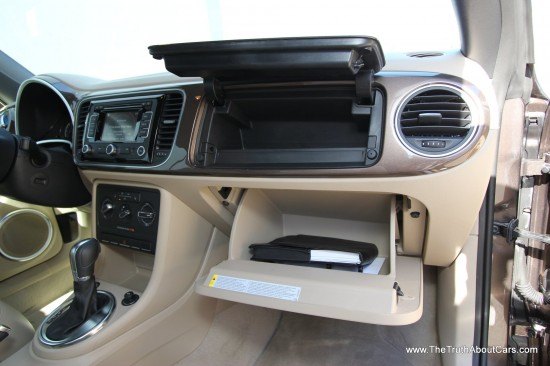






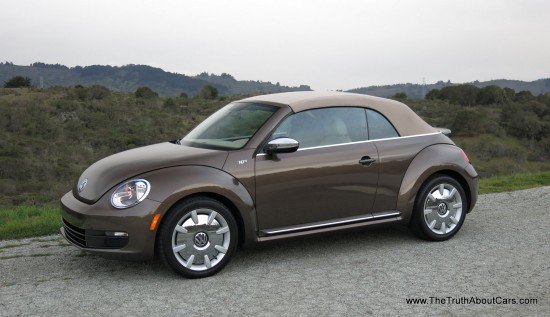











































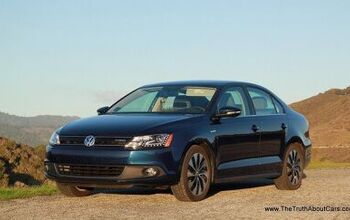
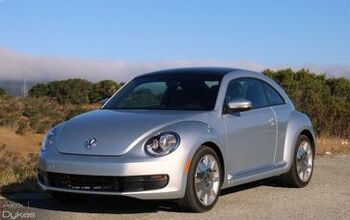












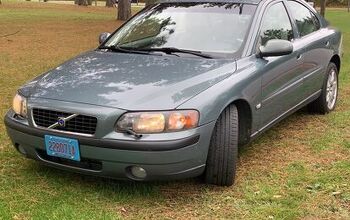
Comments
Join the conversation
If they wanted to dial down the cute, they botched it with the LED DRL-equipped models. Look at its adorable angry bird eyes! http://media4.onsugar.com/files/2011/06/22/5/1756/17568149/92/apr19-2012-volkswagen-beetle-front.jpg
Hi all. I have a question: How do you unlock the trunk from inside? I have a 2013 convertible beetle. Today on the inside of the drivers door I saw what looked like a panel that had a trunk picture on it. I got my key and popped open the panel. Inside was a rope, I pulled it out, it was neatly tucked in. I could hear the trunk unlocking, but it wasn't when I got out to try it. How does it work? I one time put my bag in the trunk with my car keys in it. I couldn't get the trunk open or the back seats down, so I had to drive home for a spare key to open the trunk. In this video the guy made it look so easy to have the seats go down. What am I doing wrong? I never knew how many times I need to open my trunk from inside, before I got this car! It is my only complaint about this car. I just love it. Being topless has never been so fun! thanks